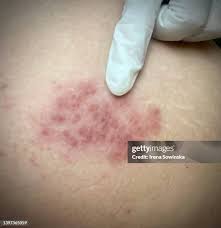Understanding Shingles: Causes, Symptoms, and Treatments

Introduction to Shingles
Shingles, also known as herpes zoster, is a painful rash caused by the reactivation of the varicella-zoster virus, the same virus that causes chickenpox. This condition primarily affects older adults and those with weakened immune systems. With the resurgence of discussions around vaccines and health in 2023, understanding shingles and its implications has become increasingly relevant for public health.
What Causes Shingles?
Shingles occurs when the dormant varicella-zoster virus reactivates, typically years after a person has recovered from chickenpox. Factors that may trigger this reactivation include stress, injury, or illness. The Centers for Disease Control and Prevention (CDC) estimates that roughly 1 in 3 people will develop shingles in their lifetime, highlighting its significance as a health concern.
Symptoms of Shingles
The symptoms often begin with localized pain, itching, or tingling, followed by a red rash that develops into painful blisters. This rash usually appears on one side of the body, commonly the torso or face, and can take weeks to heal completely. Alongside physical symptoms, some patients may also experience fever, headache, and fatigue. For some, the pain can persist long after the rash heals, leading to a condition known as postherpetic neuralgia, which can severely impact quality of life.
Treatment and Prevention
While there is no cure for shingles, antiviral medications, such as acyclovir, famciclovir, and valacyclovir, can help to shorten the duration and alleviate symptoms if administered early. Pain relief can be managed through over-the-counter pain relievers and topical treatments. Furthermore, vaccination has proven effective in preventing shingles. The vaccine, particularly the Shingrix vaccine, is recommended for adults aged 50 and older, providing strong protection against the disease.
Conclusion
As more individuals reach the age where shingles becomes a risk, awareness and education remain crucial. The resurgence of interest in vaccines following the COVID-19 pandemic has provided an opportunity to discuss shingles prevention. As we move forward, it is essential for individuals, especially those over 50, to discuss the shingles vaccine options with their healthcare providers. Understanding shingles and its prevention is vital in safeguarding health and enhancing quality of life for older adults across Canada.









